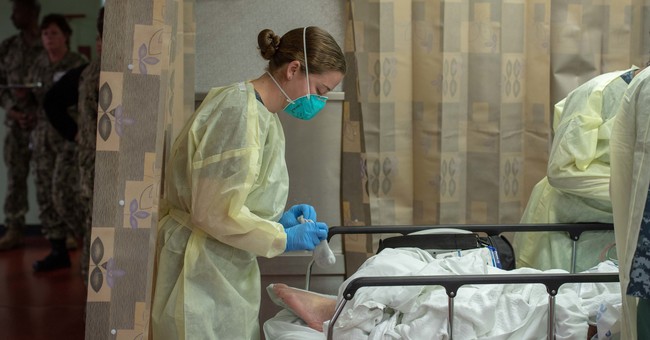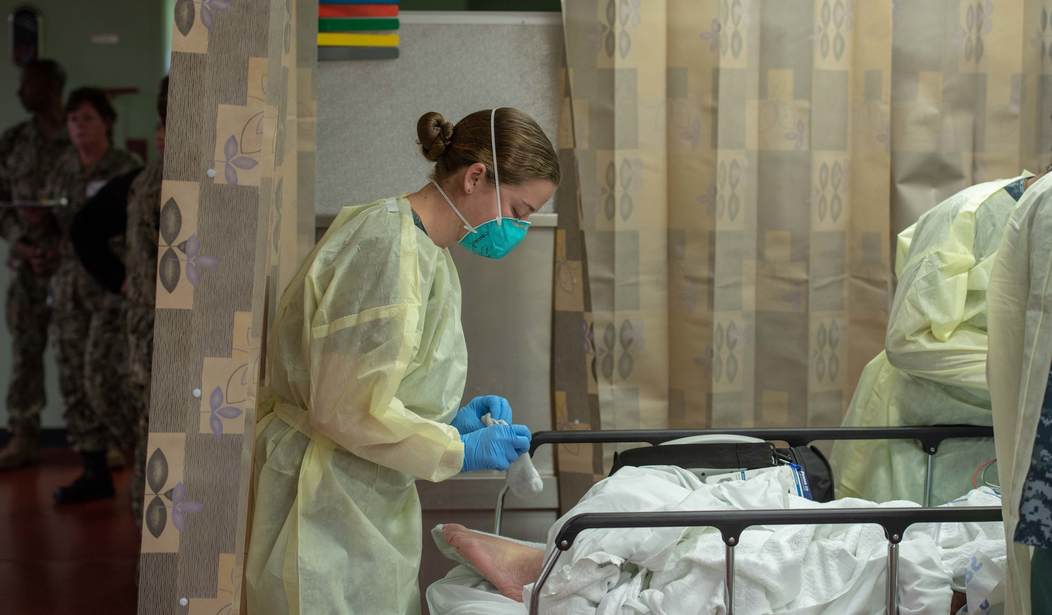
LOS ANGELES (March 29, 2020) Sailors assigned to the hospital ship USNS Mercy (T-AH 19) treat a patient from Los Angeles medical facilities March 29. Mercy deployed in support of the nation’s COVID-19 response efforts, and will serve as a referral hospital for non-COVID-19 patients currently admitted to shore-based hospitals. This allows shore base hospitals to focus their efforts on COVID-19 cases. One of the Department of Defense’s missions is Defense Support of Civil Authorities. DoD is supporting the Federal Emergency Management Agency, the lead federal agency, as well as state, local and public health authorities in helping protect the health and safety of the American people. (U.S. Navy photo by Mass Communication Specialist 2nd Class Erwin Jacob Miciano)
Germany has made a bit of name for itself during the world-wide coronavirus outbreak as having a relatively low death rate that some reports attribute to the nation’s dedication to tracing transmission rates and seeking where in the country the outbreak began.
But Germany recently bucked yet another convention in the fight against the virus when it announced that a study it had conducted in one of its hardest hit towns may indicate that COVID-19 is possibly not as deadly as suspected and not spreading through casual contact but rather close, sustained contact over a period of time.
Professor Hendrick Streeck, University of Bonn director of the Institute of Virology and Institute for HIV Research, told CNBC’s Closing Bell that a representative study was conducted in a town with a German town with a high prevalence of COVID-19 cases. The results of the study showed 15 percent of the population had antibodies as a result of contracting coronavirus, but the death rate was much lower than expected when considering the high rate of infection.
“Initial containment is important,” Streeck said, noting that containment at the beginning can stop an even known as “superspreading.” [But] if you’re now in the phase to stop the superspreading event…[and] starting typical measures of hygiene and social distancing…we are now seeing that these are enough measures to contain or control the virus spread.”
Streeck also said as the virus is passed between people, it is shown to become less, virulent, lethal, and severe.
As the virus spreads, it sends a certain percentage of people to the hospital and a few of those to ICUs; a portion of those will die. One of the biggest unanswered questions is exactly what percentage of infected people the coronavirus is killing.
From the result of their blood survey, the German team estimated the death rate in the municipality at 0.37% overall, a figure significantly lower than what’s shown on a dashboard maintained by Johns Hopkins, where the death rate in Germany among reported cases is 2%.
…
The presence of previously infected people in the community, Streeck and colleagues believe, will reduce the speed at which the virus can move in the area. They also outline a process by which social distancing can be slowly unwound, especially given hygienic measures, like handwashing, and isolating and tracking the sick. They think if people avoid getting big doses of the virus—which can happen in hospitals or via close contact with someone infected—fewer people will become severely ill, “while at the same time developing immunity” that can help finally end the outbreak.
According to a piece in Business Insider, Streeck says casual human interaction like buying groceries does not present a significant risk when it comes to catching the virus.
Germany joins China and Taiwan in concluding that COVID-19 rarely spreads through casual contact
It spreads through repeated, large doses, such as you get while sheltering in place. pic.twitter.com/z46pcTfeSK
— Bachman (@ElonBachman) April 13, 2020













Join the conversation as a VIP Member